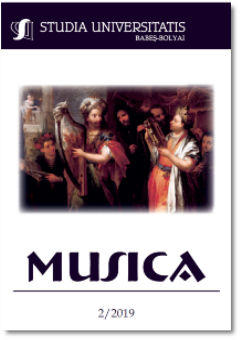THE INFLUENCE OF THE HRYSANTIC REFORM ON THE RELIGIOUS CHURCH MUSIC IN TRANSYLVANIA
THE INFLUENCE OF THE HRYSANTIC REFORM ON THE RELIGIOUS CHURCH MUSIC IN TRANSYLVANIA
Author(s): Daniel MocanuSubject(s): Fine Arts / Performing Arts, Music
Published by: Studia Universitatis Babes-Bolyai
Keywords: hrysantic reform; church/religious chants/music; the cunţanu variant; Byzantine music;
Summary/Abstract: The melodic modal byzantine structures present in the manuscripts which circulated on our country’s territory can be found in the contents of the autochthon musical variant pointed in linear notation by priest Dimitrie Cunțanu. In Transylvania, before the 1814 hrysantic reform, two styles of church chants were performed, founded on the Romanized paper of Filothei sin Agăi Jipei, and one autochthon, composed by blending the Byzantine melos with folk, cult and religious music. Post reform, the same stylistic duality was maintained, the Romanized chants by the new system were performed, only in some monastic centers, next to the Cunţanu variant. Even though the new type of Romanized music was not enforced, it became the basis of a local musical style in Byzantine melos. The presence of Byzantine music in Transylvania, by books and church singers, had a definitive role, influencing in a decisive manner the modal system, the melodic lines and the rhythmic formula in the Cunţanu collection.
Journal: Studia Universitatis Babes-Bolyai - Musica
- Issue Year: 64/2019
- Issue No: 2
- Page Range: 121-146
- Page Count: 26
- Language: English

